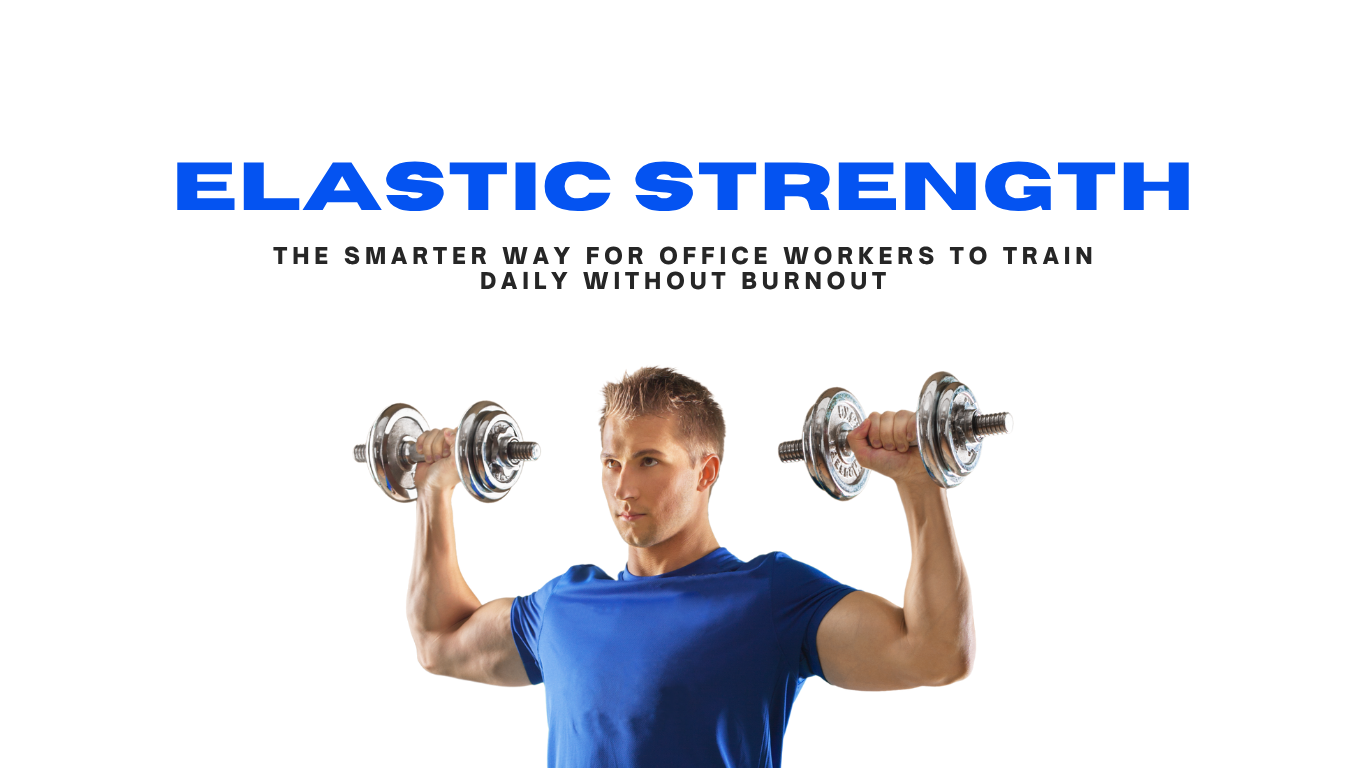The Smarter Way for Office Workers to Train Daily Without Burnout
You sit at a desk all day. Your back aches, your energy dips, and you’re told you need to hit the gym hard. But what if there’s a better, smarter way to build strength — one that works with your lifestyle, avoids injury, and rewires your body for long-term gains?
Welcome to the world of Elastic Training — not just a method, but a mindset.
🎯 What Is Elastic Training?
Elastic training emphasizes low effort, high frequency, and long-term adaptability. Unlike traditional linear or block programs that push you to failure and force recovery, elastic training is about training your nervous system, not just your muscles.
Think of it like lubricating a machine. You don’t max it out every day — you keep it moving smoothly so it’s always ready to perform.
🧱 Step-by-Step Guide for Office Warriors
Step 1: Train Daily, But Lightly
Instead of grueling 90-minute sessions, use 15–30 minutes to train daily with submaximal effort. Never go to failure.
✅ Example:
- Choose 3–5 compound movements (e.g., squats, pushups, rows, carries, kettlebell swings).
- Do 2 sets of 5 reps at about 50–70% effort.
- Stop each set feeling like you could do 2–3 more reps.
Step 2: Focus on Consistency, Not Intensity
Skip “beast mode.” Your goal is to stay under the nervous system’s panic threshold. When your body feels safe, it adapts faster.
🧠 “Grease the Groove” – as strength legends Pavel Tsatsouline and Dan John say – is about telling your nervous system: “Hey, this movement is normal.”
Step 3: Know Your Zone
Pain ≠ gain. If you’re sore or sluggish the next day, you went too hard.
💡 Rule of Thumb:
- If you feel better the next day, you did it right.
- If you feel worse, reduce volume or intensity.
Step 4: Build from Your Instincts
Don’t follow arbitrary volume targets. Humans evolved to move often and intuitively — not through rigid protocols.
👟 Incorporate natural movement:
- Walk more (NEAT: Non-Exercise Activity Thermogenesis)
- Stretch in between meetings
- Choose stairs over elevators
Step 5: Respect Pain Signals & Emotions
Never push through sharp pain — use it as a signal, not a badge of honor.
Light load exercises: Positive emotions
Medium load exercises: Mixed emotions
High load exercises: Negatiec emotions. But right after a high-intensity session, some positive emotions will be generated immediately
The key idea here is to follow your positive emotions. If walking feels good, try walking faster. If that still brings positive feelings, maybe start running a bit. Keep going like this—continuously generating positive emotions while gradually pushing your body’s limits to new levels.
🧭 Final Thoughts: Elastic Training = Resilient Living
Elastic training isn’t just about getting stronger — it’s about staying ready, reducing injury, and making training sustainable. Especially for office workers juggling stress and time constraints, this method empowers you to train smarter — not harder.
No burnout. No setbacks. Just steady, quiet gains — until one day, you realize you’re stronger, more mobile, and more energized than ever before.

Leave a Reply